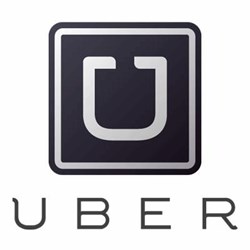Are Lyft And Uber Coming To Healthcare?

By Christine Kern, contributing writer

Ridesharing programs could help reduce costs of patient transports.
Even as more Americans than ever before are covered by health insurance thank to the Affordable Care Act, many lower income patients face real barriers to healthcare access because of transportation issues. Ridesharing services like Uber, Lyft, and others could provide the solution to a very real problem. With their low cost and ease-of-use, ridesharing services could be the next big thing in improving patient healthcare access for many patients.
According to CareMore, research suggests an estimated 3.6 million Americans miss or delay nonemergency healthcare appointments as a result of transportation issues each year, a complication that ultimately could have serious consequences for patients. The federal government spends an estimated $2.7 billion annually on nonemergency medical transportation, a figure expected grow under Medicaid expansion. But those costs could be reined in with rideshare programs like Uber and Lyft, according to the Journal of the American Medical Association.
In the article, Nonemergency Medical Transportation: Delivering Care in the Era of Lyft and Uber, JAMA writes the average per-ride costs have been reduced by more than 30 percent — from $31.54 to $21.32 — and patient satisfaction exceeded 80 percent. The program currently covers beneficiaries in selected areas of southern California, but CareMore plans to continue the program and potentially expand to markets beyond California. One attractive feature of the program is its ease-of-use: a patient simply calls CareMore, where workers schedule rides via Lyft, and wait times average nine minutes.
“Ultimately, our partnership with Lyft makes accessing healthcare easier,” said CareMore President Dr. Sachin H. Jain, in a press release. “Although the program is in the early phases, the results are promising and represent a significant shift — challenging the status quo to do what is right for patients.”
The program highlights the effectiveness of care if patients can access it, underscoring the need to think outside of the box when it comes to connecting patients and healthcare providers. Dr. Sachin H. Jain, president of CareMore stated, “Great clinical care is only great if patients can get to it; ultimately, our partnership with Lyft makes accessing healthcare easier. Although the program is in the early phases, the results are promising and represent a significant shift — challenging the status quo to do what is right for patients.”
Lyft also announced a partnership with National Medtran Network in New York City earlier this year, aimed at assisting patients get to their scheduled medical appointments. And in January, Washington DC-based MedStar Health announced a partnership with Uber to help patients access healthcare. MedStar patients can utilize Uber’s platform through a button on the hospital’s website. Users view estimated wait time and cost per ride online, and then proceed to request a ride.
“Working with Lyft, we’re helping patients live healthier lives by providing reliable, enjoyable rides to their appointments,” Billy McKee, National Medtrans Network’s president, in a blog post. “Using transportation-as-a-service like this, the health plans and government agencies we partner with are significantly reducing fraud, saving costs, and improving the patient experience.”
